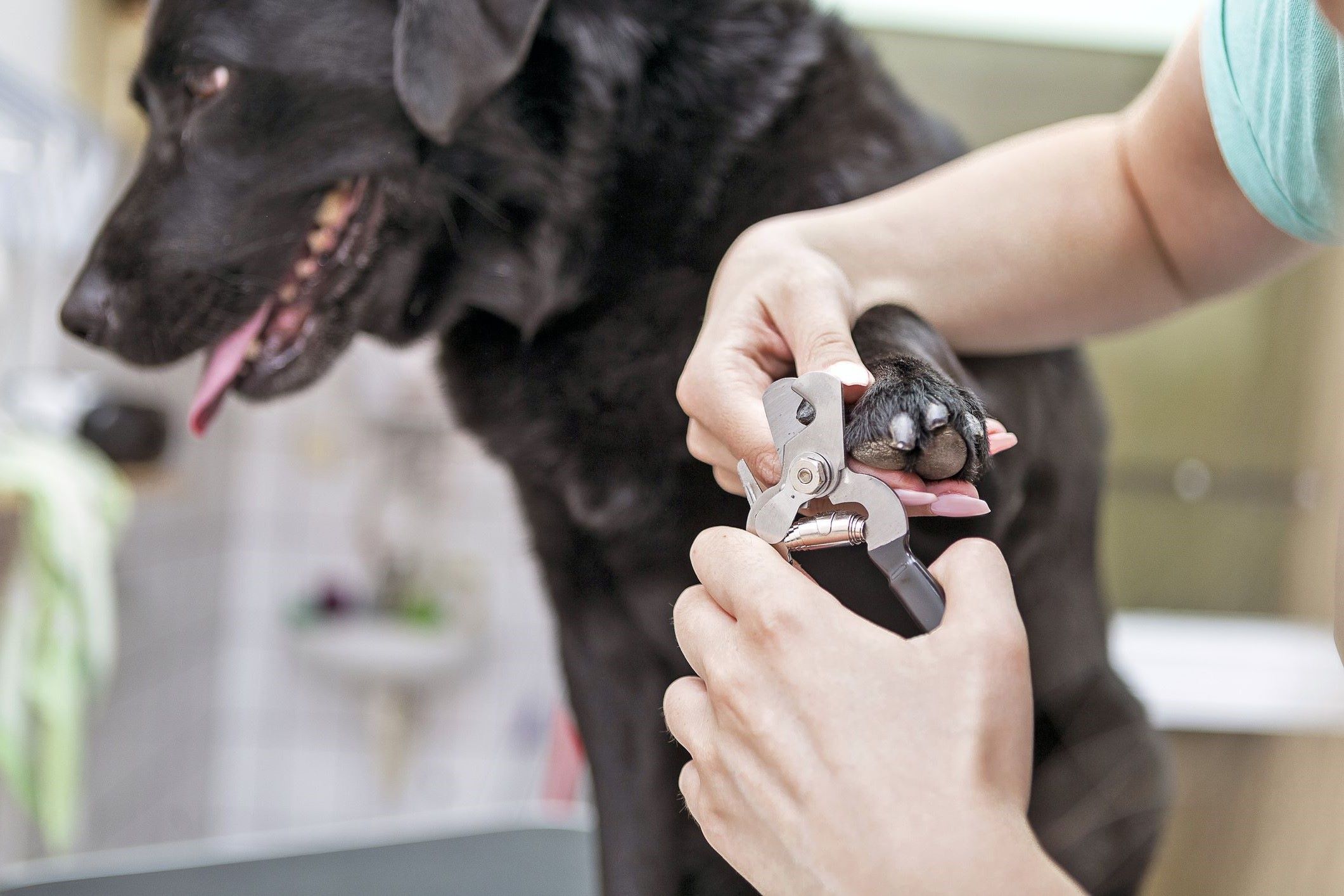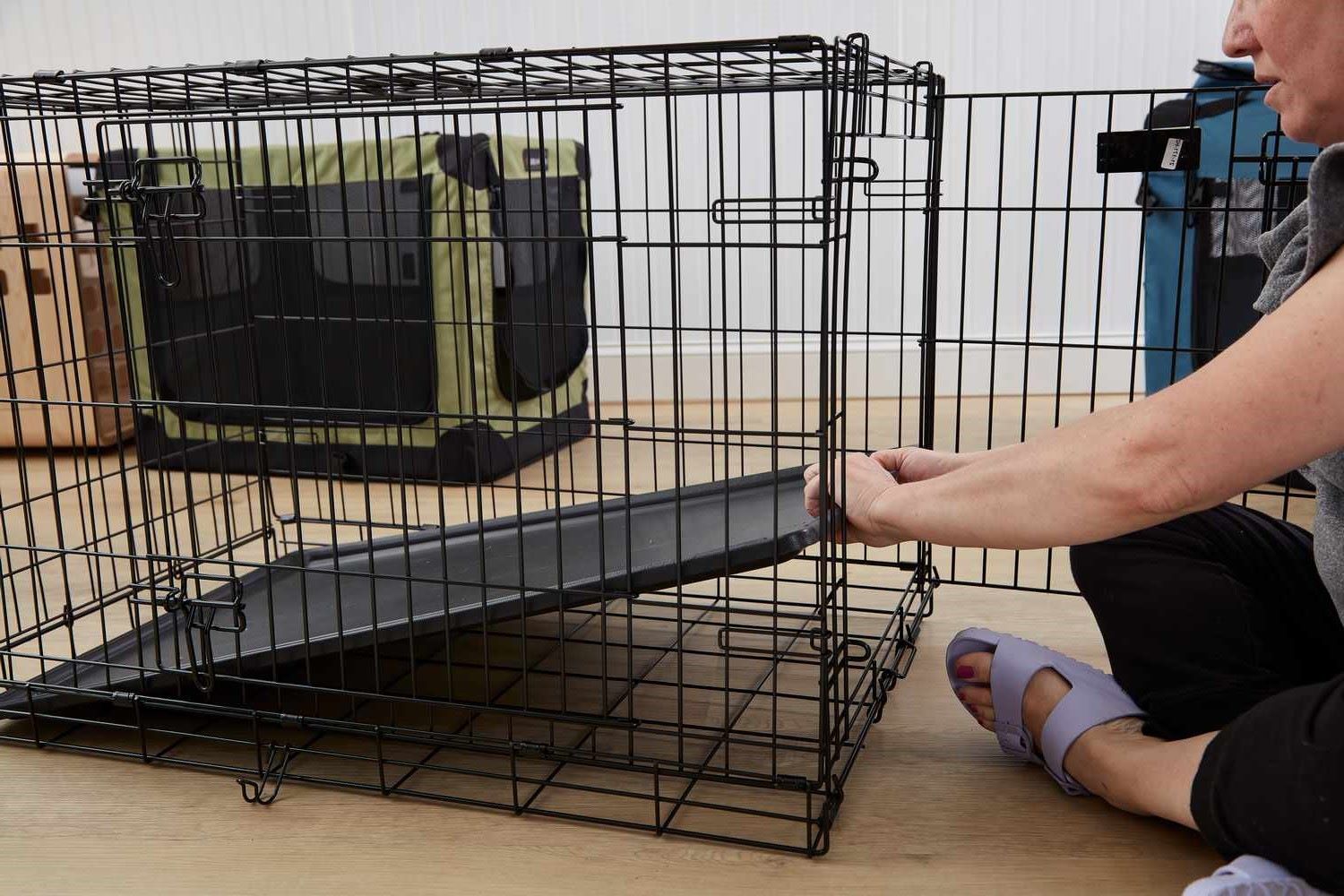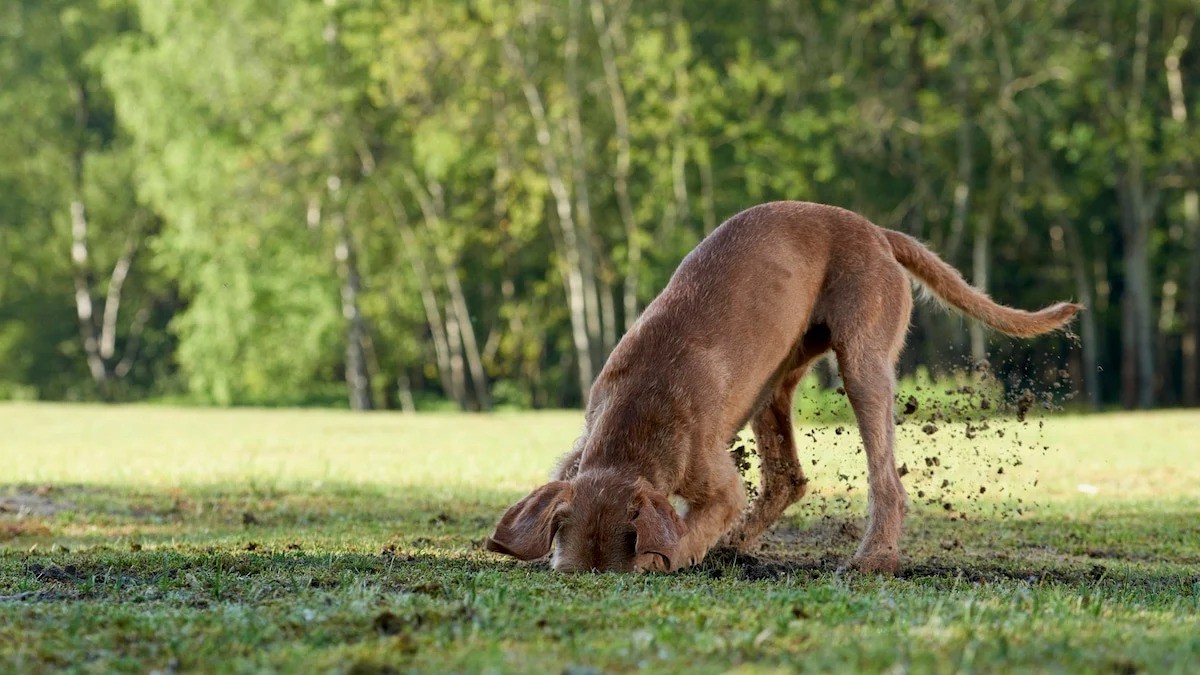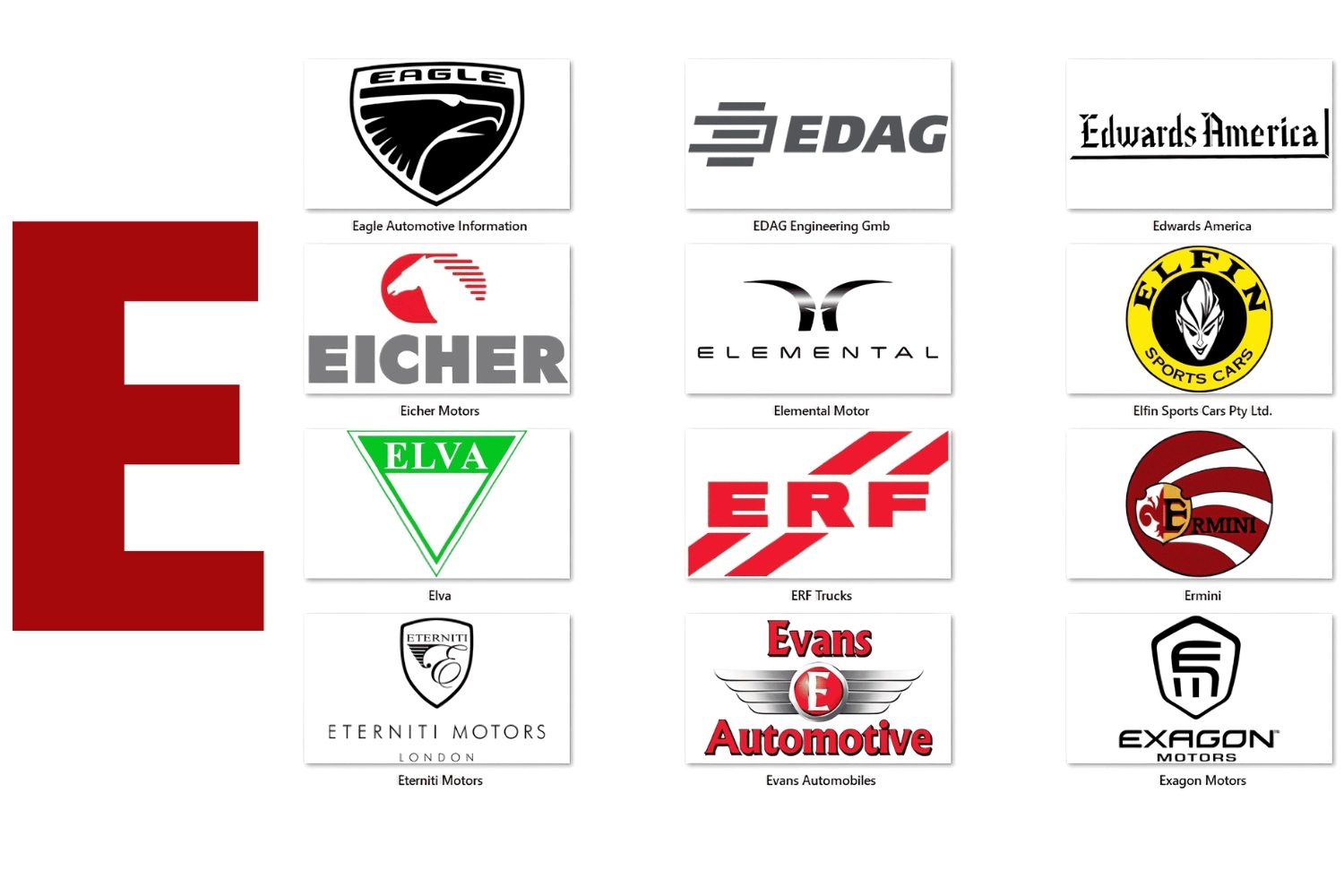Home>Pets & Animals>How To Start A Dog Rescue
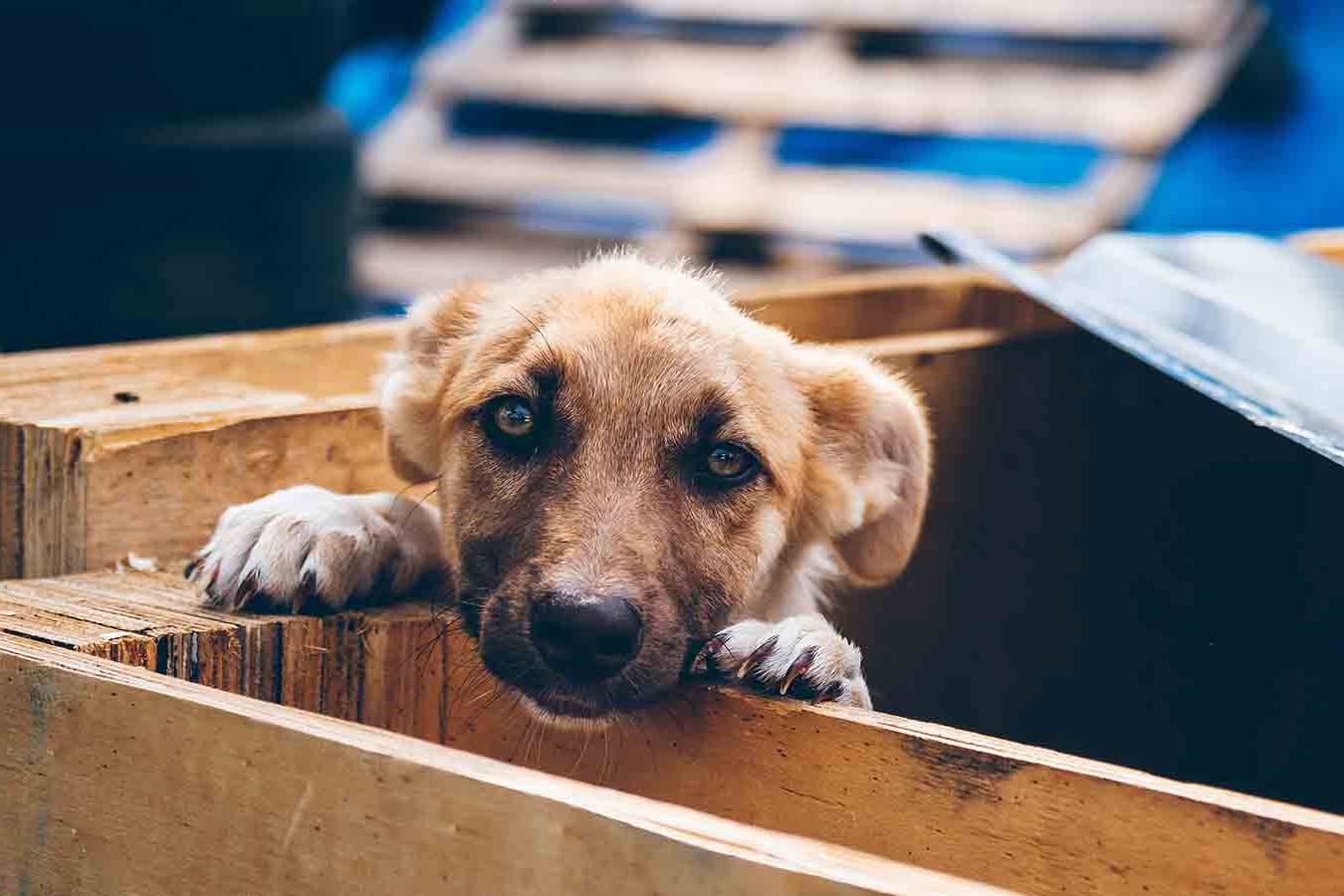

Pets & Animals
How To Start A Dog Rescue
Published: March 2, 2024
Learn how to start a dog rescue and make a difference in the lives of pets and animals. Get expert tips and guidance to launch your own rescue organization.
(Many of the links in this article redirect to a specific reviewed product. Your purchase of these products through affiliate links helps to generate commission for Noodls.com, at no extra cost. Learn more)
Table of Contents
- Introduction
- Step 1: Research and Planning
- Step 2: Establishing a Legal Entity
- Step 3: Creating a Business Plan
- Step 4: Securing Funding and Resources
- Step 5: Finding a Location
- Step 6: Building a Team
- Step 7: Setting Up Policies and Procedures
- Step 8: Marketing and Outreach
- Step 9: Launching and Operating the Rescue
- Conclusion
Introduction
Starting a dog rescue can be a deeply rewarding endeavor, offering a chance to make a positive impact on the lives of animals in need. It's a journey filled with compassion, dedication, and the opportunity to create a safe haven for dogs awaiting their forever homes. Whether you're driven by a passion for animal welfare or a desire to address the issue of stray and abandoned dogs in your community, embarking on this path requires careful planning, commitment, and a clear understanding of the responsibilities involved.
As you venture into the world of dog rescue, it's essential to recognize the challenges and the immense satisfaction that comes with providing care and shelter to dogs in need. This guide will walk you through the fundamental steps involved in starting a dog rescue, offering valuable insights and practical advice to help you navigate this fulfilling yet demanding journey.
From conducting thorough research and establishing a legal entity to securing funding, finding a suitable location, and building a dedicated team, each stage of the process plays a crucial role in laying the foundation for a successful dog rescue. Additionally, creating comprehensive policies and procedures, implementing effective marketing strategies, and ultimately launching and operating the rescue require careful consideration and strategic planning.
By following this comprehensive guide, you'll gain the knowledge and confidence needed to embark on this meaningful endeavor. Together, we'll explore the essential steps that will empower you to make a lasting difference in the lives of dogs and the community at large. So, let's embark on this inspiring journey and pave the way for a brighter future for dogs in need.
Step 1: Research and Planning
Embarking on the journey of starting a dog rescue begins with thorough research and meticulous planning. This crucial initial step sets the foundation for the entire venture, shaping the direction and scope of the rescue. Here's a detailed exploration of the key aspects involved in the research and planning phase:
-
Understanding the Need: Conduct comprehensive research to gain insights into the specific needs of the local community and the existing challenges related to stray and abandoned dogs. This involves analyzing the population of homeless dogs, the capacity of local animal shelters, and the prevalent issues contributing to the stray dog population.
-
Legal and Regulatory Requirements: Familiarize yourself with the legal and regulatory framework governing animal rescues in your area. This includes understanding the licensing, zoning, and operational requirements mandated by local authorities. Consulting with legal experts or experienced rescue operators can provide valuable guidance in navigating these complexities.
-
Market Analysis: Evaluate the demand for dog rescue services in your community. Identify the demographics of potential adopters, the availability of volunteer support, and the presence of competing animal welfare organizations. Understanding the market dynamics will help in tailoring your rescue's services to effectively address the needs of both dogs and the community.
-
Resource Assessment: Assess the availability of essential resources such as veterinary care, pet supplies, and potential partnerships with local businesses or veterinary clinics. Understanding the resource landscape will aid in developing a sustainable operational model for the rescue.
-
Networking and Partnerships: Establish connections with other animal welfare organizations, veterinary professionals, and local authorities. Building a network of support and collaboration can provide valuable resources, expertise, and potential avenues for partnerships in the future.
-
Financial Planning: Develop a comprehensive financial plan that outlines the initial investment required, ongoing operational costs, and potential revenue streams. This includes exploring fundraising opportunities, grant options, and potential donors or sponsors who align with the mission of the rescue.
By dedicating time and effort to thorough research and meticulous planning, you'll lay a solid groundwork for the successful establishment and operation of your dog rescue. This proactive approach will not only enhance the effectiveness of your rescue's services but also contribute to the long-term sustainability and impact of your endeavor.
Step 2: Establishing a Legal Entity
Establishing a legal entity is a pivotal step in the process of starting a dog rescue. By formalizing the organizational structure, you not only ensure compliance with legal requirements but also lay the groundwork for accountability, transparency, and long-term sustainability. Here's a detailed exploration of the key components involved in this crucial phase:
-
Choosing the Right Structure: Selecting the appropriate legal structure for your dog rescue is essential. Options may include forming a nonprofit organization, such as a 501(c)(3) tax-exempt entity, or establishing a limited liability company (LLC) with a charitable mission. Each structure comes with distinct legal and financial implications, so it's crucial to seek professional advice to determine the most suitable option for your rescue.
-
Registration and Compliance: Once the legal structure is determined, the next step involves registering the entity with the relevant authorities. This typically includes filing articles of incorporation or organization, obtaining a federal employer identification number (EIN), and fulfilling state-specific registration requirements. Additionally, compliance with charitable solicitation laws and any local regulations pertaining to animal welfare organizations must be addressed.
-
Board of Directors or Trustees: For nonprofit entities, assembling a dedicated and qualified board of directors or trustees is integral to the governance and strategic direction of the rescue. These individuals play a crucial role in overseeing the organization's activities, ensuring adherence to the mission, and upholding fiduciary responsibilities.
-
Bylaws and Policies: Developing comprehensive bylaws that outline the internal governance structure, decision-making processes, and operational guidelines is essential. Additionally, establishing policies related to animal care standards, adoption procedures, volunteer engagement, and financial management contributes to the transparent and ethical operation of the rescue.
-
Tax-Exempt Status: If pursuing nonprofit status, applying for federal tax-exempt recognition under section 501(c)(3) of the Internal Revenue Code is a significant milestone. This status not only provides potential donors with tax incentives for contributions but also enhances the credibility and legitimacy of the rescue in the eyes of the public and grant-making organizations.
By navigating the process of establishing a legal entity with diligence and attention to detail, you set the stage for a robust and compliant framework that underpins the mission-driven work of your dog rescue. This foundational step not only instills confidence in stakeholders but also reinforces the commitment to ethical and responsible animal welfare practices.
Step 3: Creating a Business Plan
Creating a comprehensive business plan is a critical milestone in the journey of establishing a dog rescue. This strategic document serves as a roadmap, outlining the mission, goals, operational strategies, and financial projections essential for the success and sustainability of the rescue. Here's a detailed exploration of the key components involved in this pivotal phase:
-
Mission and Vision: The business plan begins with a clear articulation of the rescue's mission and vision. This foundational statement encapsulates the core purpose of the rescue, its values, and the envisioned impact on the welfare of dogs and the community.
-
Operational Strategies: Detailing the operational strategies encompasses outlining the specific services the rescue will offer, such as intake procedures for dogs, veterinary care protocols, adoption processes, and post-adoption support. Additionally, addressing the management of volunteers, staff, and the day-to-day operations is integral to this section.
-
Market Analysis and Target Audience: Conducting a thorough market analysis to identify the target audience, including potential adopters, volunteers, and donors, is essential. Understanding the demographics, preferences, and needs of the target audience informs the development of tailored services and outreach initiatives.
-
Competitive Landscape: Assessing the competitive landscape involves identifying other animal welfare organizations, shelters, and rescue groups operating in the area. Understanding their strengths, weaknesses, and unique offerings provides valuable insights for positioning the rescue effectively within the market.
-
Financial Projections and Sustainability: Developing detailed financial projections, including revenue streams, fundraising strategies, and expense forecasts, is a crucial aspect of the business plan. Additionally, outlining sustainability initiatives, such as long-term funding strategies and cost management measures, contributes to the overall financial viability of the rescue.
-
Marketing and Outreach Plans: Crafting a robust marketing and outreach plan involves delineating the strategies for raising awareness, promoting adoption events, engaging with the community, and leveraging digital platforms for outreach. This section also encompasses branding initiatives and public relations strategies.
-
Risk Management and Contingency Planning: Addressing potential risks and developing contingency plans to mitigate challenges is an integral part of the business plan. This includes assessing risks related to funding, operational disruptions, and external factors that may impact the rescue's activities.
By meticulously crafting a business plan that encompasses these essential elements, you lay the groundwork for a resilient and purpose-driven dog rescue. This strategic document not only serves as a guide for internal operations but also communicates the vision and potential of the rescue to stakeholders, supporters, and the broader community.
Step 4: Securing Funding and Resources
Securing adequate funding and essential resources is a pivotal step in the establishment and sustained operation of a dog rescue. This phase demands strategic planning, proactive outreach, and a multifaceted approach to financial sustainability. Here's a comprehensive exploration of the key strategies and considerations involved in securing funding and resources for your dog rescue:
-
Diversifying Funding Streams: To ensure financial resilience, it's crucial to explore diverse funding streams. This may include individual donations, corporate sponsorships, grants from foundations and government agencies, fundraising events, and partnerships with local businesses. By diversifying funding sources, the rescue can mitigate the risk of over-reliance on a single channel.
-
Grant Research and Applications: Researching and applying for grants from animal welfare organizations, philanthropic foundations, and government entities can provide significant financial support. Tailoring grant applications to align with the rescue's mission and programs is essential to increase the likelihood of securing funding.
-
Community Engagement and Fundraising Events: Engaging with the local community through fundraising events, adoption drives, and awareness campaigns not only raises funds but also fosters a sense of community involvement and support. Collaborating with local businesses to host events or sponsor initiatives can amplify the impact of fundraising efforts.
-
Partnerships and Sponsorships: Cultivating partnerships with veterinary clinics, pet supply stores, and other businesses within the pet industry can result in valuable sponsorships and in-kind donations. These partnerships not only provide essential resources but also enhance the rescue's visibility within the community.
-
Donor Cultivation and Stewardship: Building and nurturing relationships with individual donors who are passionate about animal welfare is integral to sustaining ongoing support. Implementing donor stewardship practices, such as personalized communications and recognition programs, can foster long-term donor engagement.
-
In-Kind Donations and Volunteer Support: Seeking in-kind donations of pet supplies, veterinary services, and operational resources from local businesses and individuals can significantly reduce operational costs. Additionally, leveraging volunteer support for administrative tasks, animal care, and event coordination contributes to resource optimization.
-
Financial Transparency and Accountability: Demonstrating transparency in financial management and accountability instills trust in donors, supporters, and grant-making organizations. Maintaining clear and accurate financial records, and providing regular updates on the allocation of funds and the impact of contributions, enhances the rescue's credibility.
By implementing a strategic and multifaceted approach to securing funding and resources, the dog rescue can establish a solid financial foundation and ensure the availability of essential resources to fulfill its mission. This proactive pursuit of financial sustainability not only supports the rescue's immediate operational needs but also paves the way for long-term impact and growth.
Read more: How To Pick Up A Dog
Step 5: Finding a Location
Finding a suitable location is a pivotal step in the establishment of a dog rescue, as it sets the physical foundation for providing shelter, care, and support to dogs in need. The process of selecting the right location involves careful consideration of various factors to ensure that the facility meets the needs of the rescue and aligns with its mission. Here's a detailed exploration of the key considerations involved in finding a location for your dog rescue:
-
Accessibility and Visibility: The location of the rescue should be easily accessible to the community and potential adopters. A visible and well-connected location can enhance public awareness, facilitate volunteer engagement, and attract visitors interested in adopting or supporting the rescue's initiatives.
-
Space and Facilities: Assessing the space and facilities available at potential locations is crucial. The facility should have adequate indoor and outdoor space to accommodate dogs, provide exercise areas, and facilitate socialization. Additionally, essential facilities such as quarantine areas, veterinary care spaces, and administrative offices should be considered to ensure comprehensive care and operational efficiency.
-
Zoning and Regulatory Compliance: Ensuring that the chosen location complies with zoning regulations and local ordinances related to animal care facilities is essential. Understanding the zoning requirements and obtaining necessary permits or approvals from local authorities is integral to the legal and operational viability of the rescue.
-
Community Environment: Evaluating the community environment surrounding the location is important. A supportive and animal-friendly community can contribute to the success of the rescue, fostering positive relationships with neighbors, local businesses, and potential adopters. Additionally, assessing the proximity to veterinary services, pet supply stores, and other pet-related amenities is beneficial for the rescue's operations.
-
Safety and Security: Prioritizing the safety and security of the location is paramount. The facility should be equipped with secure fencing, adequate lighting, and measures to prevent unauthorized access. Ensuring a safe and comfortable environment for the dogs, staff, volunteers, and visitors is essential for the overall well-being of the rescue.
-
Future Expansion and Adaptability: Considering the potential for future expansion and adaptability of the location is strategic. The chosen facility should have the capacity to accommodate the growth of the rescue's programs and services, allowing for scalability and long-term sustainability.
By carefully evaluating these considerations and conducting thorough site visits and assessments, the process of finding a location for your dog rescue can culminate in the selection of a space that aligns with the mission, values, and operational needs of the rescue. This physical foundation serves as a nurturing environment for dogs in transition and a hub for community engagement, education, and advocacy in the realm of animal welfare.
Step 6: Building a Team
Building a dedicated and passionate team is a pivotal aspect of establishing a successful dog rescue. The individuals who form the core of the rescue's team play a crucial role in shaping its culture, driving its mission, and ensuring the well-being of the dogs under its care. Here's a detailed exploration of the key considerations and strategies involved in building a team for your dog rescue:
-
Recruitment and Volunteer Engagement: Actively recruiting individuals who share a deep commitment to animal welfare and the rescue's mission is essential. This may involve reaching out to local animal lovers, engaging with volunteer networks, and leveraging social media and community outreach to attract individuals with diverse skills and experiences. Cultivating a culture of volunteerism and providing meaningful opportunities for engagement can foster a sense of belonging and purpose within the team.
-
Skill Diversification and Roles: Assessing the specific skills and expertise needed to support the rescue's operations is integral to building a well-rounded team. From animal care specialists and veterinary professionals to administrative support and outreach coordinators, identifying and defining distinct roles within the team ensures that each member contributes effectively to the rescue's objectives.
-
Training and Development: Providing comprehensive training and ongoing development opportunities for team members is essential. This may include education on animal behavior, handling protocols, and the rescue's policies and procedures. Additionally, offering avenues for professional growth and skill enhancement fosters a culture of continuous learning and expertise within the team.
-
Team Cohesion and Communication: Fostering a cohesive and communicative team environment is vital for operational efficiency and morale. Establishing regular team meetings, open channels of communication, and platforms for sharing ideas and feedback cultivates a sense of collaboration and unity. Additionally, recognizing and celebrating team achievements and milestones reinforces a positive and supportive team culture.
-
Leadership and Mentorship: Identifying individuals with leadership potential and providing mentorship opportunities can contribute to the growth and sustainability of the team. Effective leadership fosters a sense of direction, motivation, and accountability, while mentorship initiatives nurture the skills and confidence of team members, empowering them to contribute meaningfully to the rescue's mission.
By prioritizing the recruitment, development, and cohesion of a dedicated team, the dog rescue can establish a supportive and empowered workforce that is aligned with its values and committed to providing exceptional care and advocacy for dogs in need. The collective efforts of the team serve as the driving force behind the rescue's impact and the realization of its mission.
Step 7: Setting Up Policies and Procedures
Setting up comprehensive policies and procedures is a critical step in establishing a structured and ethical framework for the operations of a dog rescue. These guidelines serve as the guiding principles that govern the rescue's activities, ensuring the well-being of the dogs, the safety of staff and volunteers, and the ethical conduct of all involved. Here's a detailed exploration of the key components involved in setting up policies and procedures for your dog rescue:
-
Animal Care Standards: Developing clear and detailed protocols for the care and welfare of the dogs under the rescue's guardianship is paramount. This includes guidelines for nutrition, exercise, socialization, veterinary care, and behavioral assessments. Additionally, establishing protocols for disease prevention, vaccination schedules, and emergency medical procedures contributes to the overall health and well-being of the dogs.
-
Adoption Procedures: Defining transparent and ethical adoption procedures ensures that the dogs are placed in suitable and loving homes. This involves screening potential adopters, conducting home visits, and establishing criteria for matching dogs with adoptive families. Additionally, outlining post-adoption support and follow-up procedures contributes to the long-term welfare of the dogs and the satisfaction of adopters.
-
Volunteer and Staff Guidelines: Establishing clear guidelines for the recruitment, training, and conduct of volunteers and staff members is integral to maintaining a professional and supportive environment. This includes outlining expectations for behavior, confidentiality, conflict resolution, and the reporting of concerns. Additionally, providing avenues for ongoing training and skill development fosters a culture of continuous improvement and expertise within the team.
-
Operational Protocols: Developing operational protocols for intake procedures, daily care routines, cleaning and sanitation practices, and facility maintenance ensures the efficient and hygienic management of the rescue's premises. Additionally, establishing emergency response protocols, evacuation procedures, and safety measures contributes to the overall security and preparedness of the rescue.
-
Ethical Standards and Code of Conduct: Defining ethical standards and a code of conduct for all individuals associated with the rescue reinforces the commitment to responsible and compassionate animal welfare practices. This includes guidelines for the humane treatment of animals, the prevention of cruelty, and the promotion of respect and empathy in all interactions with the dogs and the community.
By meticulously establishing and adhering to these policies and procedures, the dog rescue can uphold the highest standards of care, ethics, and professionalism. These guidelines not only serve as a testament to the rescue's commitment to the well-being of dogs but also instill confidence in stakeholders, supporters, and the broader community.
Step 8: Marketing and Outreach
Effective marketing and outreach strategies are essential for raising awareness, engaging the community, and promoting the mission of a dog rescue. By strategically leveraging various channels and initiatives, the rescue can amplify its impact, attract potential adopters and volunteers, and cultivate lasting support. Here's a comprehensive exploration of the key components involved in the marketing and outreach efforts for your dog rescue:
-
Branding and Messaging: Developing a compelling and cohesive brand identity that reflects the values and mission of the rescue is pivotal. This includes creating a memorable logo, defining the rescue's unique selling points, and crafting a consistent messaging strategy that resonates with the target audience. A strong and recognizable brand fosters trust and connection within the community.
-
Digital Presence: Establishing a robust digital presence through a professional website, active social media profiles, and engaging content is integral to reaching a wider audience. Utilizing platforms such as Facebook, Instagram, and Twitter allows the rescue to share success stories, promote adoptable dogs, and communicate its impact effectively.
-
Community Events and Outreach: Hosting and participating in community events, adoption drives, and educational workshops provides valuable opportunities to engage with the public. These initiatives not only raise awareness about the rescue's work but also facilitate meaningful interactions with potential adopters, volunteers, and supporters.
-
Partnerships and Collaborations: Cultivating partnerships with local businesses, pet-related organizations, and media outlets can expand the reach of the rescue's message. Collaborative initiatives, sponsorships, and media features can amplify the visibility of the rescue within the community and attract diverse forms of support.
-
Storytelling and Content Creation: Sharing compelling stories of rescued dogs, volunteer experiences, and impactful moments through written narratives, videos, and visual content humanizes the rescue's mission. Authentic storytelling creates emotional connections and inspires action among the audience.
-
Email Marketing and Newsletters: Building and nurturing an email subscriber list allows the rescue to communicate updates, success stories, and fundraising initiatives directly to supporters. Regular newsletters and targeted email campaigns can drive engagement and donations.
-
Public Relations and Media Outreach: Proactively engaging with local media outlets, press releases, and media pitches can secure coverage that raises the profile of the rescue. Positive media exposure not only amplifies the rescue's reach but also positions it as a reputable and impactful organization.
By implementing a multifaceted marketing and outreach strategy that encompasses these essential elements, the dog rescue can effectively communicate its mission, attract support, and ultimately make a meaningful difference in the lives of dogs and the community. These initiatives not only raise the visibility of the rescue but also foster a culture of compassion and advocacy for animal welfare.
Read more: How To Draw A Cute Dog
Step 9: Launching and Operating the Rescue
The culmination of meticulous planning, dedicated efforts, and unwavering passion, the launch of a dog rescue marks the beginning of its impactful journey. As the rescue transitions from preparation to active operation, several key considerations come into play, shaping the day-to-day activities and the overarching mission. Here's a detailed exploration of the essential components involved in launching and operating the rescue:
-
Initial Intake and Care: The launch phase involves the intake of dogs in need, whether from shelters, owner surrenders, or strays. Implementing thorough intake procedures, including health assessments, vaccinations, and behavioral evaluations, ensures that each dog receives the necessary care and attention upon arrival. Establishing a nurturing and safe environment for the dogs sets the tone for the rescue's commitment to their well-being.
-
Adoption and Placement: Facilitating successful adoptions is a core aspect of the rescue's operations. This involves promoting adoptable dogs through various channels, conducting meet-and-greet sessions, and carefully matching dogs with suitable adoptive families. Providing ongoing support and resources to adopters ensures the long-term happiness and welfare of the dogs in their new homes.
-
Volunteer and Staff Coordination: Effectively coordinating the efforts of volunteers and staff members is integral to the smooth operation of the rescue. Assigning roles, providing training, and fostering a collaborative environment empowers the team to work cohesively towards the rescue's mission. Recognizing and appreciating the contributions of volunteers and staff members reinforces a culture of dedication and teamwork.
-
Community Engagement and Education: Actively engaging with the community through outreach events, educational workshops, and advocacy initiatives raises awareness about responsible pet ownership, animal welfare, and the rescue's impact. Building strong relationships with the community fosters support, volunteer involvement, and a network of advocates for the rescue's cause.
-
Continuous Evaluation and Improvement: Operating the rescue involves ongoing evaluation of programs, policies, and impact. Regular assessments of operational efficiency, animal care standards, and adoption outcomes allow for continuous improvement and adaptation to evolving needs. Embracing a culture of learning and adaptability ensures that the rescue remains responsive and effective in fulfilling its mission.
By navigating the launch and operational phase with dedication and a commitment to excellence, the dog rescue can realize its vision of providing a safe haven for dogs in need, advocating for their welfare, and making a lasting impact on the community. Each day of operation presents opportunities to uphold the rescue's values, nurture the well-being of dogs, and inspire positive change in the realm of animal welfare.
Conclusion
As we conclude this comprehensive guide to starting a dog rescue, it's essential to reflect on the profound impact and transformative journey that awaits those dedicated to this noble cause. The culmination of thorough research, meticulous planning, and the execution of each essential step paves the way for the realization of a vision—a vision of compassion, advocacy, and unwavering commitment to the well-being of dogs in need.
The journey of establishing a dog rescue is not merely a series of logistical tasks; it embodies a profound dedication to animal welfare, a deep-rooted empathy for the plight of homeless dogs, and a resolute belief in the power of collective action to effect positive change. Each step, from the initial research and legal formalities to the operational launch, is imbued with the spirit of compassion and the unwavering commitment to creating a safe haven for dogs awaiting their forever homes.
As aspiring rescuers embark on this transformative path, they become champions of empathy, educators of responsible pet ownership, and advocates for the voiceless. The impact of a well-founded dog rescue extends far beyond the walls of its premises, resonating within the community, inspiring compassion, and fostering a culture of empathy and respect for all living beings.
The conclusion of this guide marks the beginning of a new chapter—a chapter filled with the heartwarming tales of rescued dogs finding loving homes, the tireless dedication of volunteers and staff, and the enduring impact of a community united in the cause of animal welfare. It signifies the commencement of a journey where each day presents an opportunity to make a tangible difference, to nurture the well-being of dogs, and to inspire others to join in the collective effort of creating a more compassionate world.
In closing, the establishment and operation of a dog rescue are not merely endeavors; they are testaments to the unwavering human capacity for empathy, kindness, and the pursuit of a better world for all beings. As the journey unfolds, may the spirit of compassion guide every decision, may the well-being of dogs remain at the forefront of every action, and may the impact of the rescue resonate as a beacon of hope and transformation within the community and beyond.
